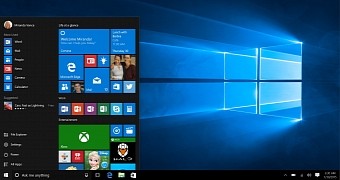While Microsoft is betting big on Windows 11, and this is clearly the company’s main focus in the long term, most users out there are currently on Windows 10.
Back in 2021 when it shipped Windows 11, Microsoft gave birth to a major controversy caused mostly by the upgraded system requirements of the new operating system.
With requirements like TPM 2.0, Windows 11 wasn’t available for plenty of Windows 10 devices that were otherwise perfectly capable of running the operating system. Microsoft promised to continue supporting Windows 10 until October 2025, hoping that most users would slowly purchase new computers to get Windows 11 by the time the Windows 10 EOL is reached.
Users still running Windows 10 on their devices might have noticed that occasionally, their desktops or taskbar disappear temporarily or simply become unresponsive.
The issue showed up a few weeks ago, and it was confirmed by Microsoft itself in November.
In most cases, simply rebooting the Windows device was enough to bring the desktop or the taskbar back to a working state. Truth be told, this isn’t necessarily a convenient workaround if the issue comes back every once in a while, but at least it fixes the whole thing without too much fuss.
Microsoft confirmed this was indeed a known workaround.
“You might experience an error in which the desktop or taskbar might momentarily disappear, or your device might become unresponsive. Workaround: If you are unable to use the resolution below, you can mitigate this issue by restarting your Windows device,” the company said in a post on the Windows Health Dashboard
According to the software giant itself, only Windows 10 was affected, so devices running Windows 11 are on the safe side. The following Windows 10 versions are known to encounter the glitch:
- Windows 10, version 22H2
- Windows 10, version 21H2
- Windows 10, version 21H1
- Windows 10, version 20H2
The good news is that Microsoft has managed to resolve the bug, and what’s more, it did it without the need for a new update. The issue has been addressed with the help of a system known as Known Issue Rollback, which gives Microsoft the necessary controls to resolve bugs with zero action required on the user side.
Microsoft, however, says the KIR isn’t applied immediately on all devices, as the whole thing could take up to 24 hours – given the fix was applied in mid-November, it should already be there on all the affected Windows 10 devices.
“This issue is resolved using Known Issue Rollback (KIR). Please note that it might take up to 24 hours for the resolution to propagate automatically to consumer devices and non-managed business devices. Restarting your Windows device might help the resolution apply to your device faster. For enterprise-managed devices that have installed an affected update and encountered this issue can resolve it by installing and configuring a special Group Policy. The special Group Policy can be found in Computer Configuration -> Administrative Templates -> <Group Policy name listed below>,” Microsoft said.
Not a long time ago, Microsoft announced that Windows 10 version 22H2 entered the final phase, with the operating system already reaching the broad availability. In other words, all devices that are eligible for the update can download and install it with a simple check for updates on Windows Update.
Windows 10 will continue to get updates until October 2025, with a new feature update also expected to go live next year with subtle improvements. Quality updates will continue to be shipped every month as per the typical release schedule.

 14 DAY TRIAL //
14 DAY TRIAL //